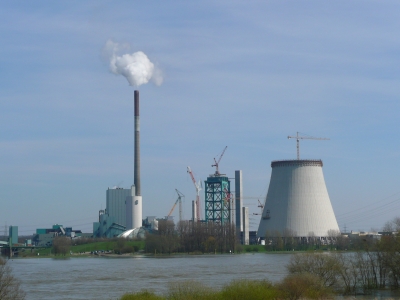Previously, the IED required monitoring only during normal operating conditions. Following the conclusion of the trilogues, the directive now mandates monitoring during both normal operating conditions and Other Than Normal Operating Conditions (OTNOC), signifying a crucial step towards holding incineration operators accountable for emissions produced.
Janek Vahk, Zero Pollution Policy Manager at Zero Waste Europe states: “The Industrial Emissions Directive has finally closed, at least partially, an important permitting and monitoring loophole that relates to dioxins monitoring to be applied at the start-up and shut-down phases, which is a critical phase for dioxin formation. There is now crystal clear wording which says monitoring of PCDD/F and PCBs is mandatory during start-ups.”
Support for this development stems from insights carried out by the Joint Research Centre in 2019, which found that during a cold start-up, the surfaces of the furnace and boiler, conducive to PCDD/F formation through de novo synthesis, are substantially larger than during stable operating conditions. This disparity could potentially result in PCDD/F emission loads equivalent to several months of normal operation being linked to a single cold start. Today’s agreement addresses these concerns, emphasising a commitment to a more sustainable and responsible waste management approach.
A recent study by ToxicoWatch on one of Europe’s largest waste incinerators, Ivry-Paris XIII, revealed that the monitoring devices for dioxin emissions from the incinerator were inactive for a total of 6,936 hours, equivalent to 289 days, throughout the years 2020 and 2021.
“Recent research reveals,” Vahk continues, “that the immediate surroundings of waste incinerators are heavily contaminated with Persistent Organic Pollutants (POPs). This raises a critical question about the permissibility of constructing these industrial facilities in the heart of cities. Such placements potentially pose severe health risks for residents, particularly in densely populated urban centers like Copenhagen, Brussels, and Paris, where hundreds of thousands of inhabitants live downstream of incinerators.”
To address the issue of undetected dioxin emissions, the European Parliament adopted amendments to the Directive that required a minimum frequency for measurements, voted on earlier this year. This entails the mandatory monitoring of emissions during start-up and shutdown phases at regular intervals, stipulating measurement campaigns at least every three years.
“The final wording,” Vahk continues, “is a weakening of the initial text and opens the possibility to use ‘substitute measurements’. Such measurements cannot provide reliable information about dioxins and PCB emissions during start-ups. The use of surrogate parameters shall not be allowed.”
Looking ahead, Zero Waste Europe urges the European Commission to make its methodology for measuring PCDD/Fs transparent and eliminate the use of substitute parameters such as total volatile organic compounds/total organic carbon (TVOC/TOC).










